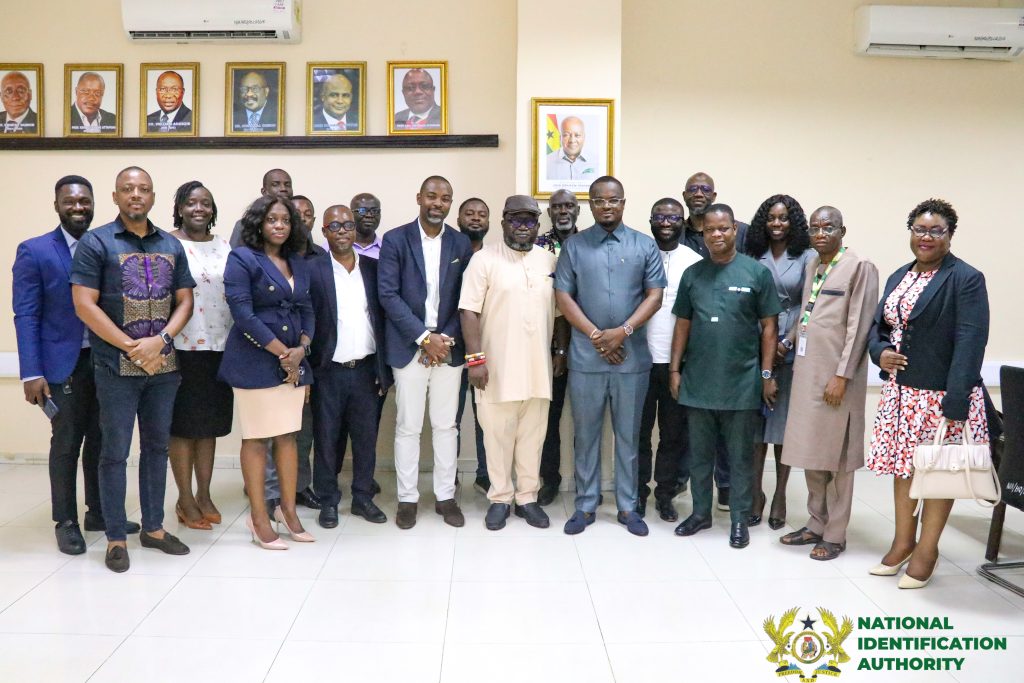
The leadership of the Ghana Chamber of Telecommunications (GCT) and the Electronic Money Issuers (EMIs) Chamber of Ghana have pledged their unwavering support to the National Identification Authority (NIA) to help it carry out its mandate of advancing Ghana’s digital transformation. This commitment was made during a high-level courtesy call on the NIA’s leadership in Accra on February 11, 2025.
The meeting, which brought together members of the two Chambers (led by Ing. Dr. Kenneth Ashigbey) and the management of the NIA (led by its new Acting Executive Secretary Mr. Wisdom Yayra Koku Deku), focused on strengthening collaboration with the NIA to foster seamless digital identity verification, enhance data protection, and drive down the cost of verification services for businesses and consumers alike.
Key Issues Discussed
One of the key issues discussed was the need for enhanced collaboration between the members of the two Chambers and the NIA. Ing. Dr. Ashigbey, pledged the support of the GCT and the EMIs Chamber to the NIA, in enriching and sanitising its database, a move aimed at enhancing data accuracy and combating fraud across sectors.

Concerns Over Verification Fees
A significant portion of the meeting focused on the cost of verification services. The NIA outlined a tiered fee structure designed to reduce costs for large-scale users such as telecom companies and EMIs. However, concerns were raised about the affordability of these services for fintech startups and small businesses. To address this, suggestions were made to review micro-pricing models before the revised legislation is laid before Parliament. The leadership of both chambers offered to assist the NIA in finding a balance that ensures cost-effectiveness without compromising data security.
Commitment to Data Security and Fraud Prevention
The NIA reaffirmed its commitment to data privacy and security, revealing ongoing collaborations with the Data Protection Commission.
Technical Collaboration and Next Steps
All parties agreed to maintain open channels for technical discussions and feedback to support the work of the NIA. Regular technical meetings will also be scheduled to ensure continuous system improvements and to address emerging challenges.
The meeting underscored the critical importance that the leadership of the Ghana Chamber of Telecommunications (GCT) and the Electronic Money Issuers (EMIs) Chamber of Ghana, place on the role of the NIA in Ghana’s digital transformation and the importance of collaboration with stakeholders in the telecommunications and digital financial sectors.
Source: Chamber News Desk



